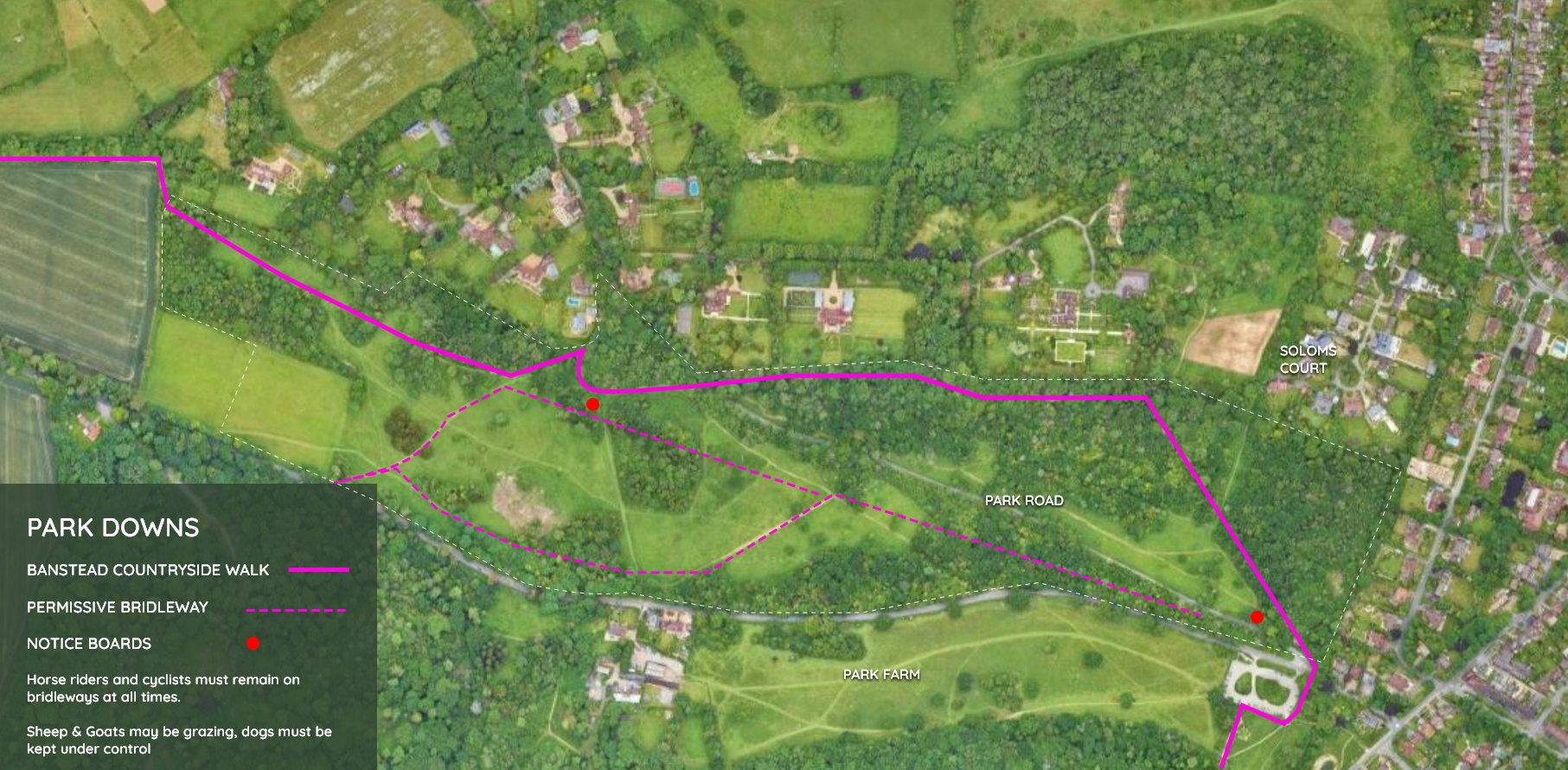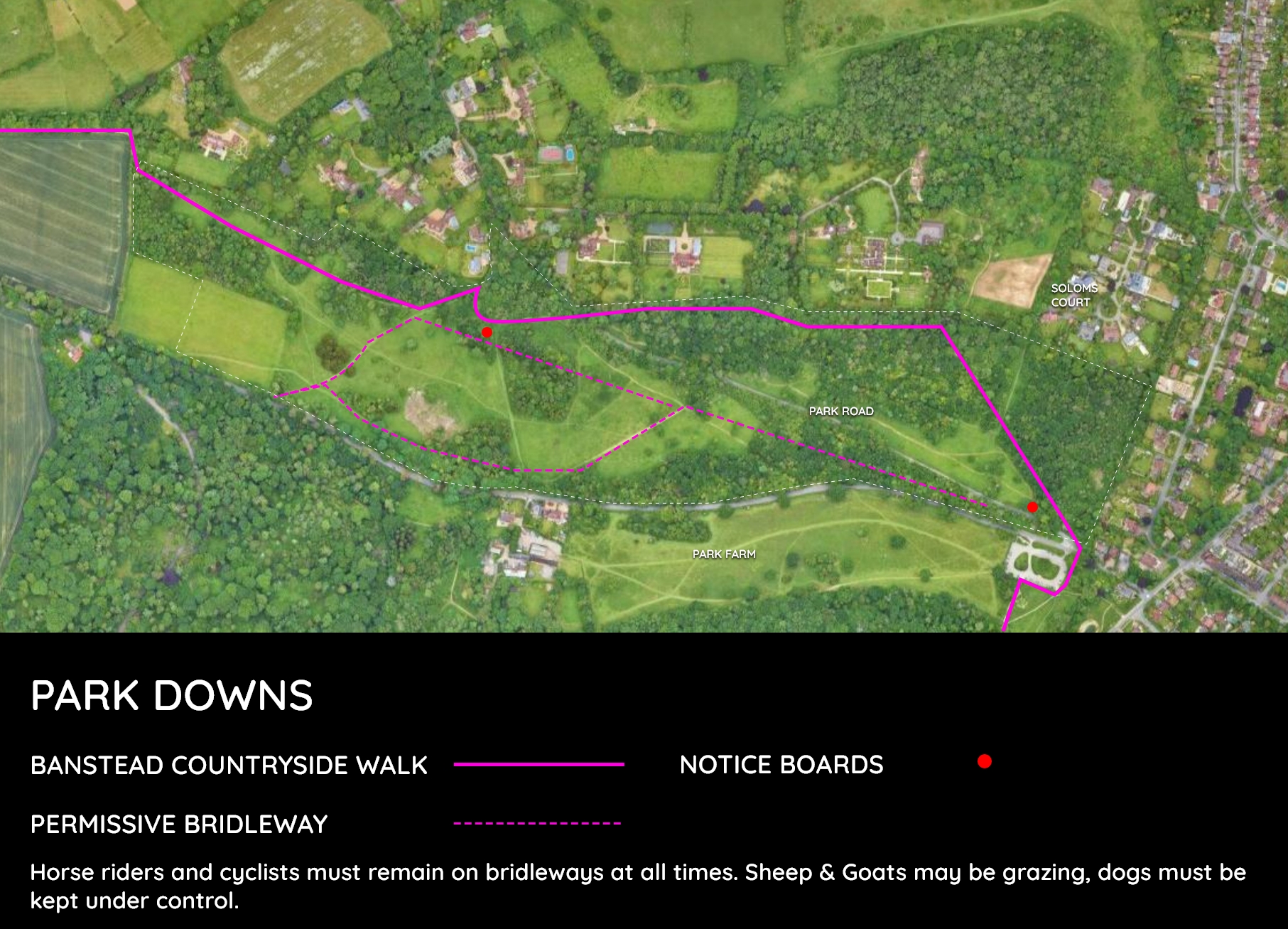Park Downs
Park Downs is the smallest of the areas we manage and forms part of Chipstead Downs Site of Special Scientific Interest. The site lies on a steep south-facing slope opposite Banstead Woods with breathtaking views over the valley.
Sensitive management over recent years has resulted in the reappearance of typical chalk plant species. The herb rich grassland meadows also provide an important habitat for invertebrate species, the most obvious to visitors are the butterflies.
Download Site Map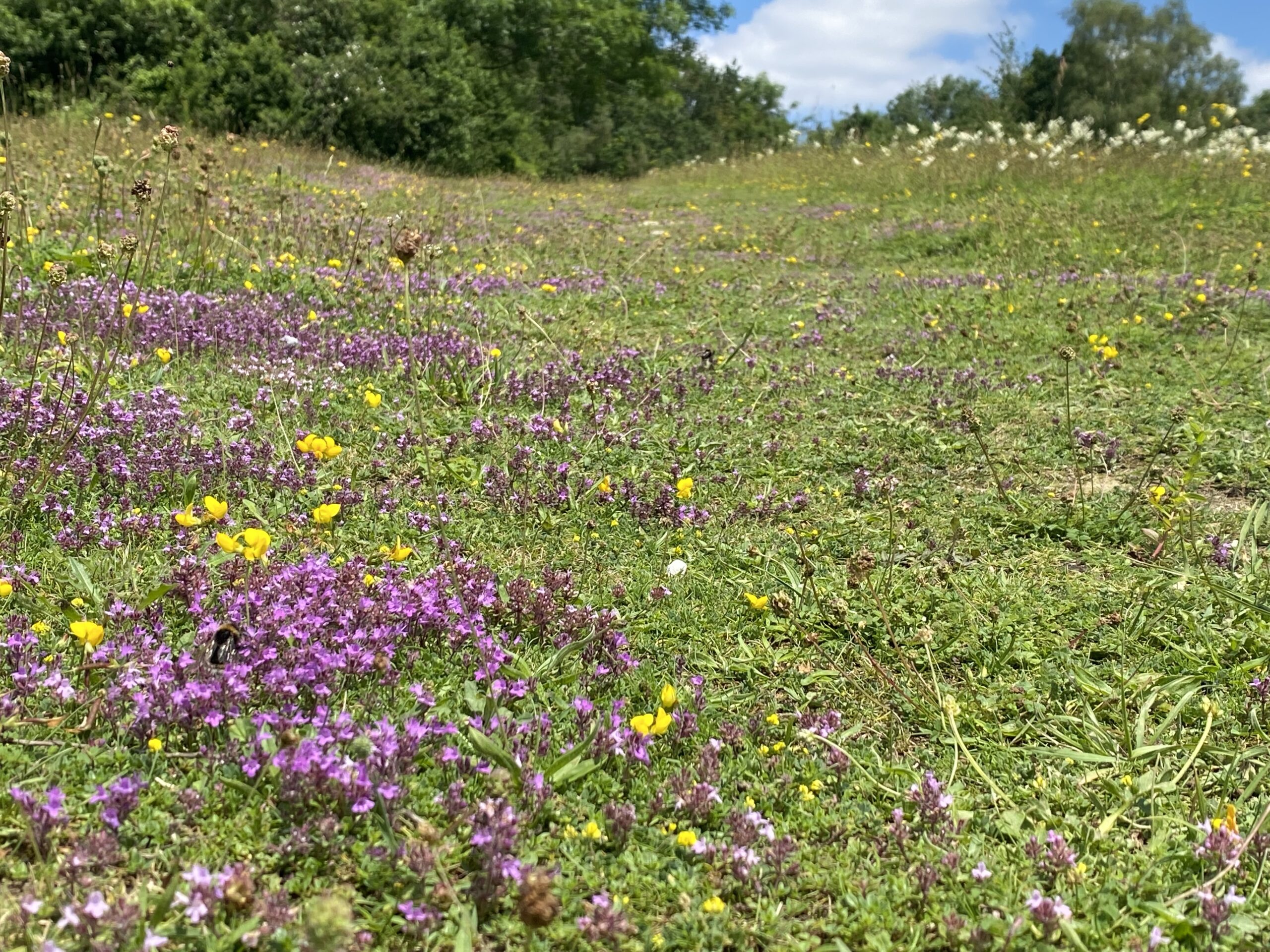
Habitats
At 74 acres (30 hectares), Park Downs is the smallest of the four areas of Banstead Commons that we manage. The site lies on a steep south-facing slope on the opposite side of Holly Lane from Banstead Woods and is split diagonally by Park Road.
It has been designated as part of the Chipstead Downs SSSI because of the chalk downland and the flora and fauna assemblages that are associated with the habitat. Until the Second World War, Park Downs was regularly grazed by sheep (and, less formally, by rabbits) but, with the onset of more intensive farming methods and the decline in the rabbit population, the previously open slopes became overgrown and invaded by scrub.
The rare and vulnerable chalk-loving plants (and the small animals that depend on them) cannot compete with more aggressive types of grass, shrubs and other plants and they become deprived of light and either die or become dormant. So, we started to manage the area sensitively to restore the more favourable former conditions.
We are pleased to say that the clearance work and conservation grazing that we have introduced since 2011 has enabled many rarities to return and flourish.
We are proud that in 2021 Natural England have judged that the grassland areas on Park Downs are in favourable condition - our dedicated management to restore this precious and nationally rare habitat has acheived the desired results.
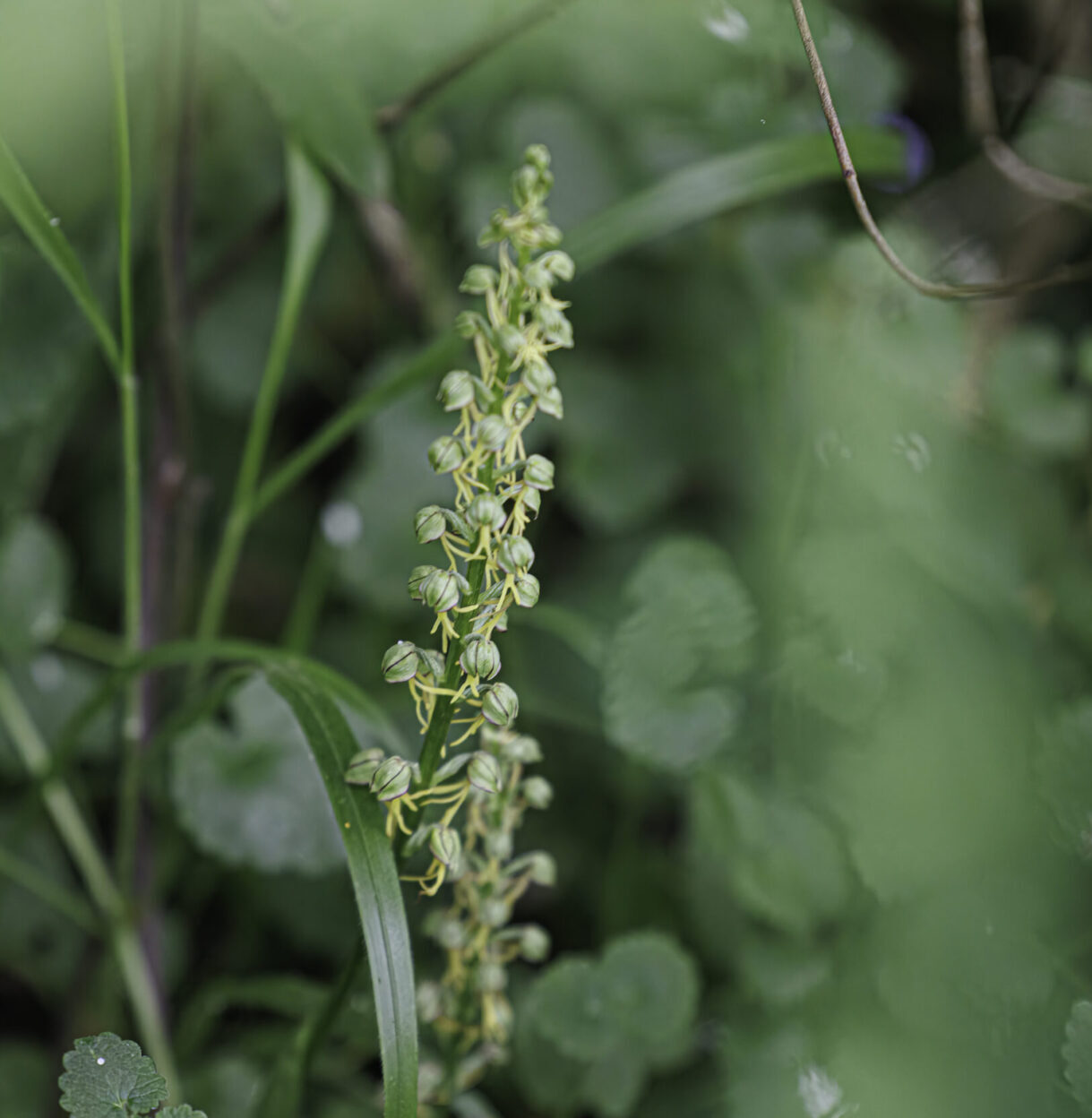
Flora
The flora include many unusual and threatened species, some of which are found in very few other places, in Surrey or anywhere else. There are at least five orchid species on the open downland as well as even rarer plants such as knotted pearlwort and autumn gentian, as well as more common (but still notable and attractive) flowers such as eyebrights, different species of violets, fairy and blue flax, harebells and yellow-wort.
In the woodland areas, there are relatively scarce flowers such as stinking hellebore, gladdon, spurge laurel and barberry, as well as many interesting ferns, lichens, liverworts and fungi, many of which have not yet been surveyed properly or officially recorded.
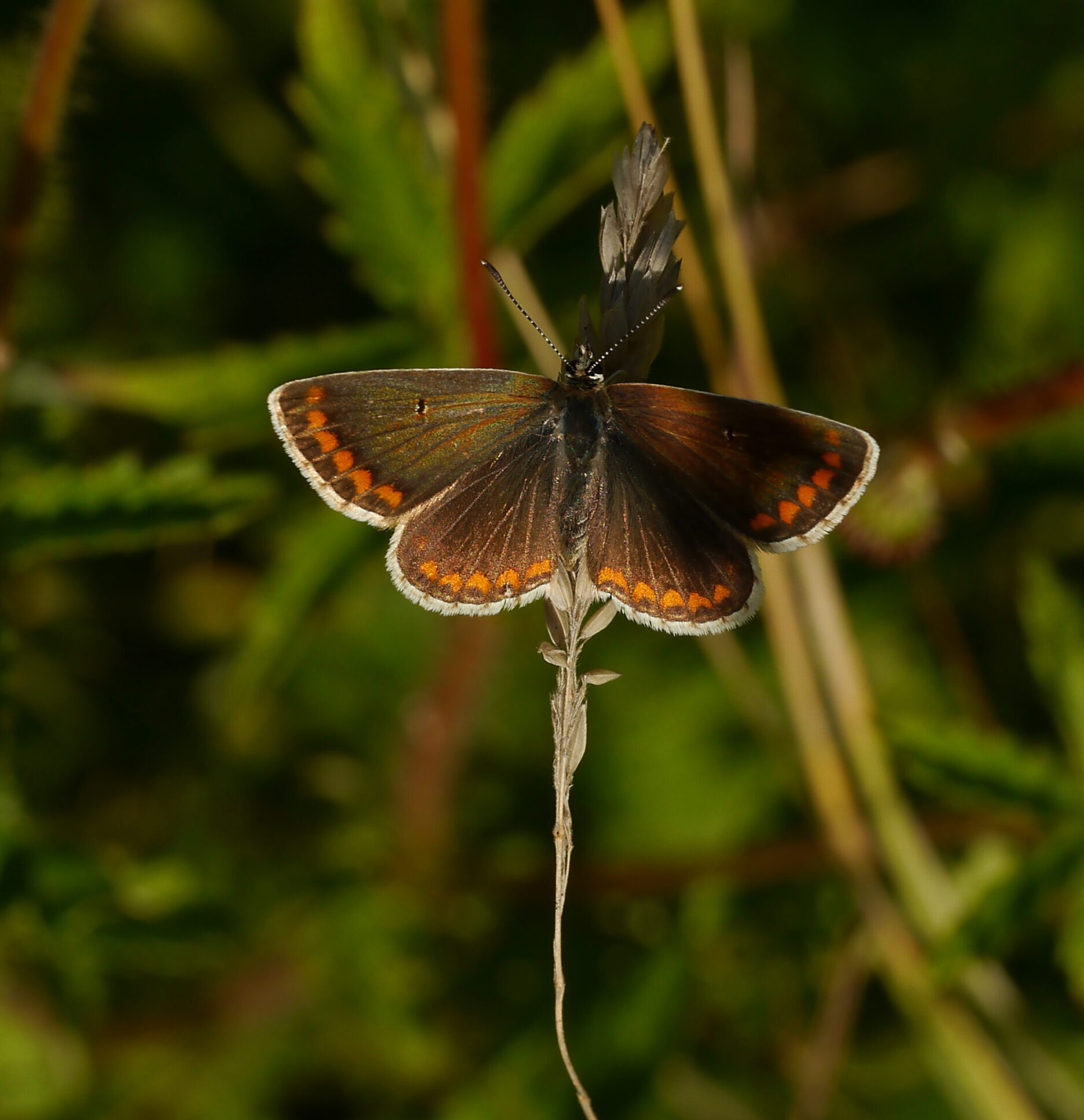
Fauna
Most of the larger animal species seen on Park Downs move between there and the much larger sheltered area of Banstead Woods. They include foxes, roe deer, rabbits and badgers all of which are relatively easy to spot, either in the flesh or by evidence of their tracks and other signs. But there are many smaller mammals such as shrews, voles, mice, stoats, weasels and bats.
The birdlife on Park Downs in the summer is dominated by various warblers including garden warblers, whitethroats and blackcaps and you will see swifts and swallows flying overhead. If you are really lucky, you might catch a glimpse of a spotted flycatcher or a hobby. Of resident raptor species, kestrels and sparrowhawks breed on the Downs and red kites and buzzards often patrol higher up. We also have at least two species of owls. Treecreepers, woodpeckers and nuthatches are present year-round and winter visitors include redwings and fieldfares.
The flora that depends on the warm south-facing slopes are attractive to many scarce invertebrate species, the most obvious of which are the butterflies. Analysis of butterfly transect data suggests that Park Downs is one of the best sites in Surrey with 34 species recorded. Marbled white and gatekeeprs are particularly numerous in the right seasonal window for them (marbled Whites, in particular, fly for a very short time - less than a month). Brown argus and common and chalkhill blues are numerous and we also have less common species such as hairstreaks and the silver-spotted skipper. Dragonflies, beetles, grasshoppers, bees and moths also abound. In some weeks burnet moths seem to be everywhere you look.
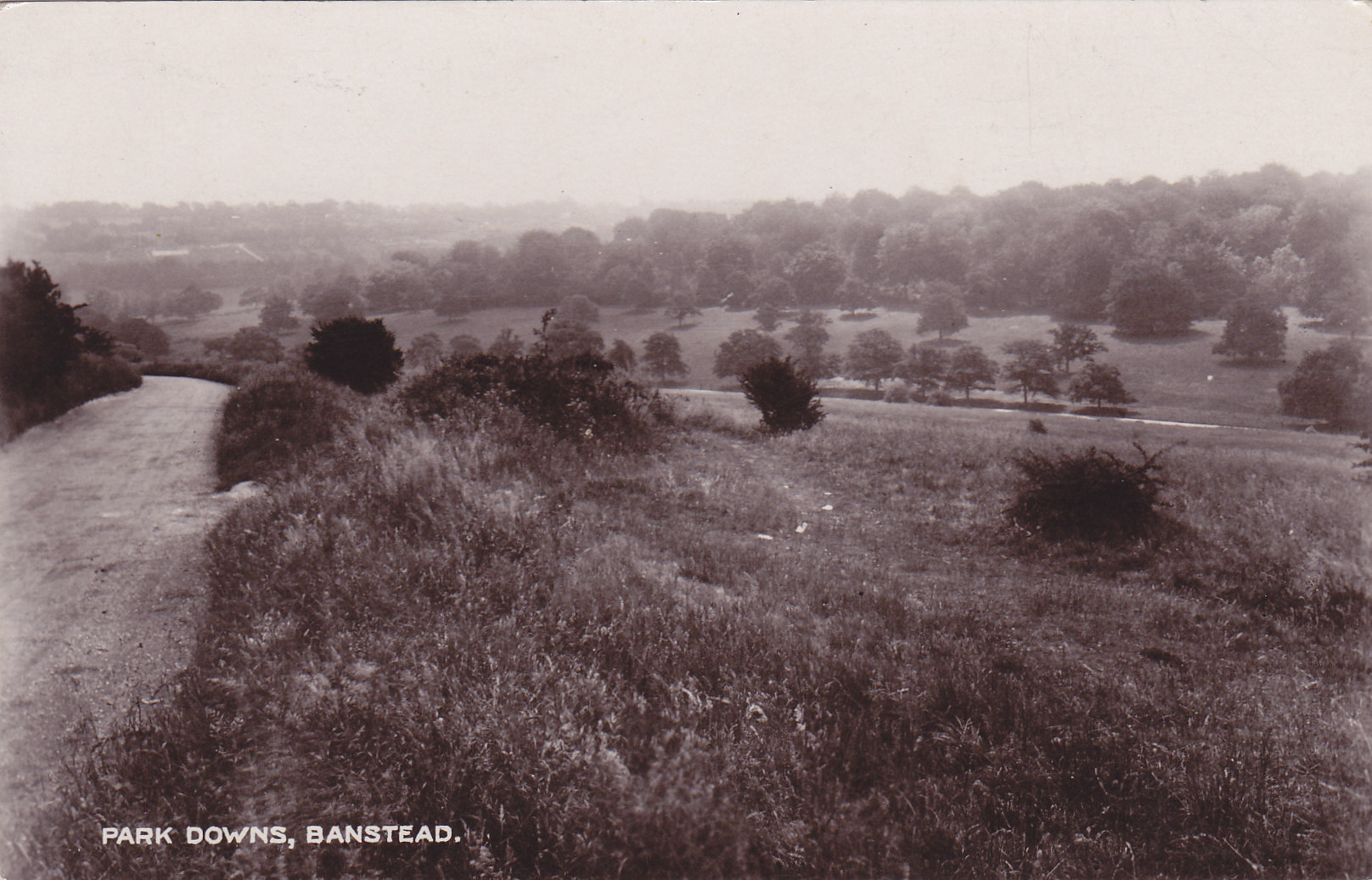
Archaeology
The archaeology of Park Downs (so far as we know) is less extensive than on our other sites, possibly because it was a strictly pastoral area for almost its entire history. We haven't found any Roman villas or Iron Age hillforts but there are some rather more prosaic remains if you look carefully. There are some (probably medieval) stockponds along Holly Lane and there is an abandoned chalk quarry close to Park Lane - there are photographs of visitors' cars parked there in the 1930s.
As with many other such areas close to habitation, the area was also used intensively by the Home Guard during the Second World War for training so there may well be hidden air raid shelters, gun emplacements or searchlight platforms, for example, still there. Every now and then, an intriguing lump of rusty metal appears from the undergrowth that looks as if it's been there from at least the 1940s.
Map of Park Downs
